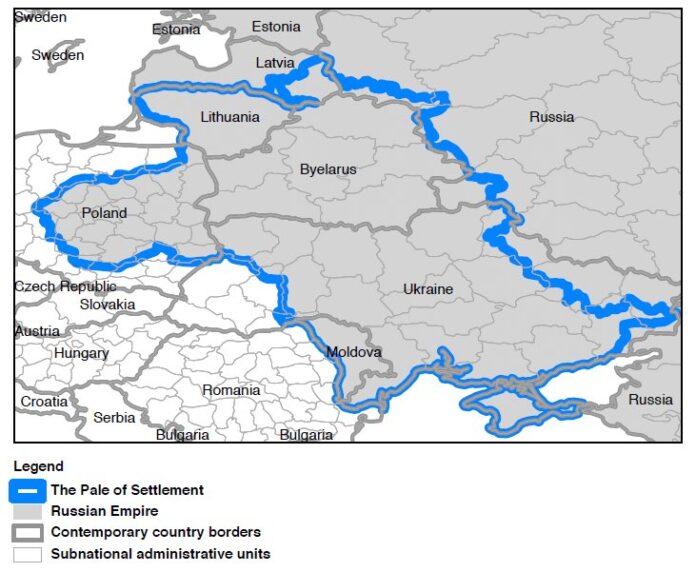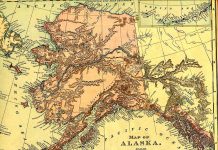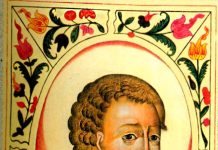“On December 23, 1791, Catherine II (“the Great”), the empress of Russia, authorized the creation of the Pale of Settlement, an area in the western part of the empire in which Jewish subjects would be required to reside. The borders of the Pale, which was abolished formally only in 1917, changed with time, as did the rules regarding Jews who were exempted from the requirement to live there, but at its peak, the Pale was home to approximately five million Jews, estimated to be 40 percent of the world’s Jewish population at the time,” – starts an article in the Haaretz newspaper. “In 1772, Catherine II forced the Jews of the Pale of Settlement to stay in their shtetls and forbade them from returning to the towns that they occupied before the partition of Poland. The Pale of Settlement was officialized in 1791 with the purpose of ridding Moscow of Jews. Its borders were finalized in 1812 with the annexation of Bessarabia,” – adds more details “Antisemitism in the Russian Empire” Wikipedia page. Does that situation qualify to be called “ghetto”? One of the definitions of the ‘ghetto’ according to the Mariam-Webster Dictionary is ‘a situation that resembles a ghetto especially in conferring inferior status or limiting opportunity’. The ‘Fiddler on the Roof‘ can help one to get a sense of what it was like to live in the Pale of Settlement, (although reading the original Sholem Aleichem’s ‘Tevye the Dairyman‘ would still be better). Not many people realize that it is in Ukraine that the story takes place, and it is Kyiv and its neighboring city of Borodyanka is the central stage of the plot. The reason why the readers do not see the name Kyiv is that Aleichem in almost all his works referred to Kyiv as Yehupets. Scholars think that the word ‘Yehupets‘ derives from the Ukrainian word for Egypt and most likely for Sholem Aleichem the atmosphere in Kyiv resembled the time of Jewish slavery in Egypt. But how did Kyiv become the place where the Jews were not allowed to live? Who is to blame for this racial segregation? Initially, Kyiv was within the Pale of Settlement and the Jews lived in it freely, but in 1835, tsar Nicholas I excluded Kyiv from the Pale, and the Jews were expelled from their homes. Since then, living in Kyiv was illegal for Jews, but some of them secretly returned or moved to it. One episode in the ‘Tevye’ shows the dangers for the Jews who dared secretly live in the city:
“..My dear Menachem-Mendl, what brings you to, of all places, Yehupetz?”
“What do you mean? I’ve been here for a year and a half.”
“Is that so? Are you a native? A Yehupetzer?”
“Sshhh,” he said, looking around.
“Don’t shout so loudly, Reb Tevye. I am living here, but it must remain between us.”
I stared at him as if he were crazy. “You’re here illegally,” I said, “and you’re out in the open in the Yehupetz market square?”
“Don’t ask, Reb Tevye,” he said. “That’s the way it is. You obviously aren’t acquainted with Yehupetz regulations. Come, I’ll tell you, and you’ll understand what it means to be a resident and not a resident.” And he gave me a long, drawn-out account of how you go crazy trying to get a permit to live there.”
One of the most important conclusions to be made in view of the facts mentioned above is that Russia had been chauvinistic and antisemitic long before the notorious German Nazis of the 20th century. Next time any Moscovite official speaks of some “Nazis history” they see in another country, ask their comment on the Pale of Settlement.
< Pogroms in Ukraine article has a very rare insight and perspective. As can be seen, the Ukrainian government was eager to investigate openly how the pogroms happened and invited Jewish authorities to be part of the process. But it appears that the true culprit was known by then already. And who was it? Can we guess?










